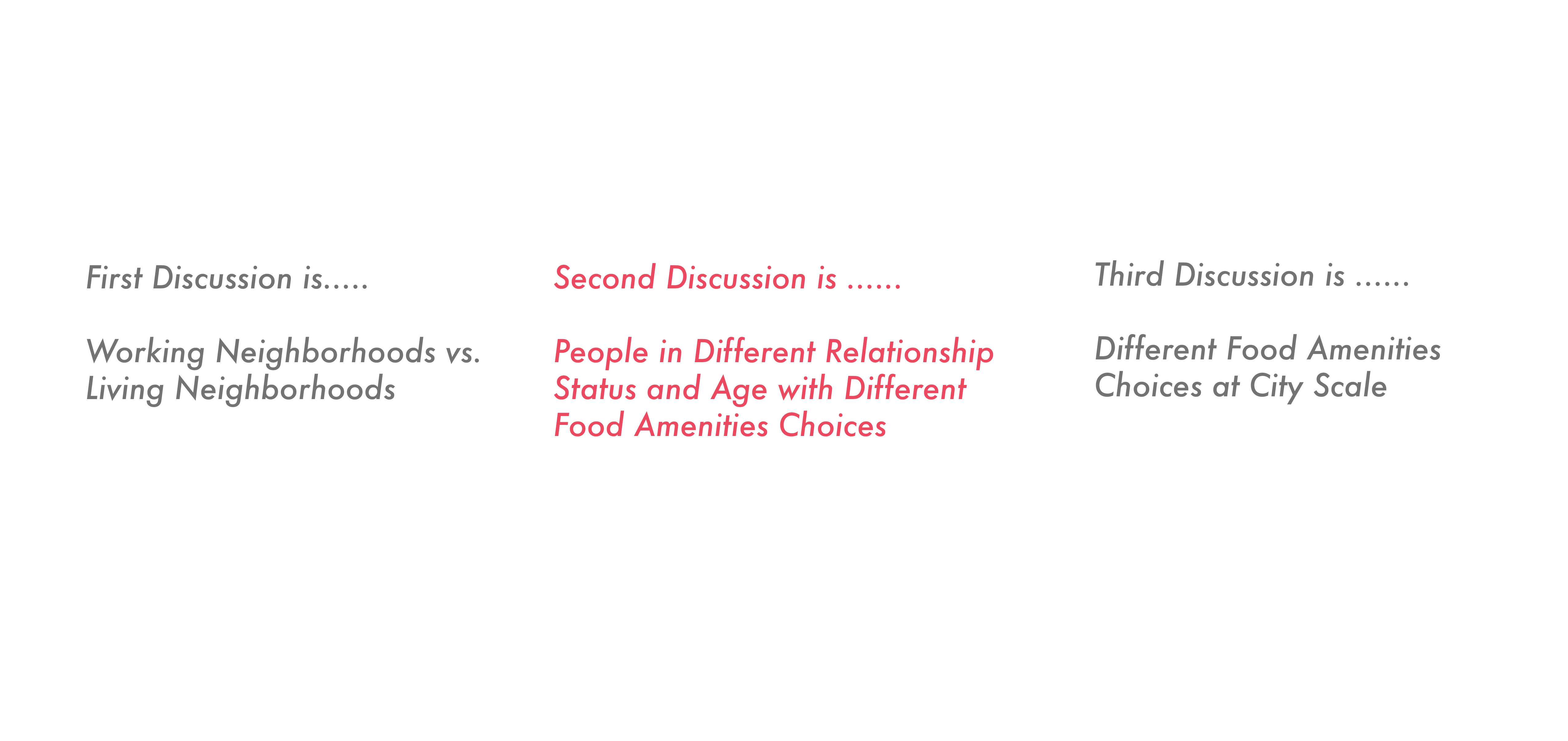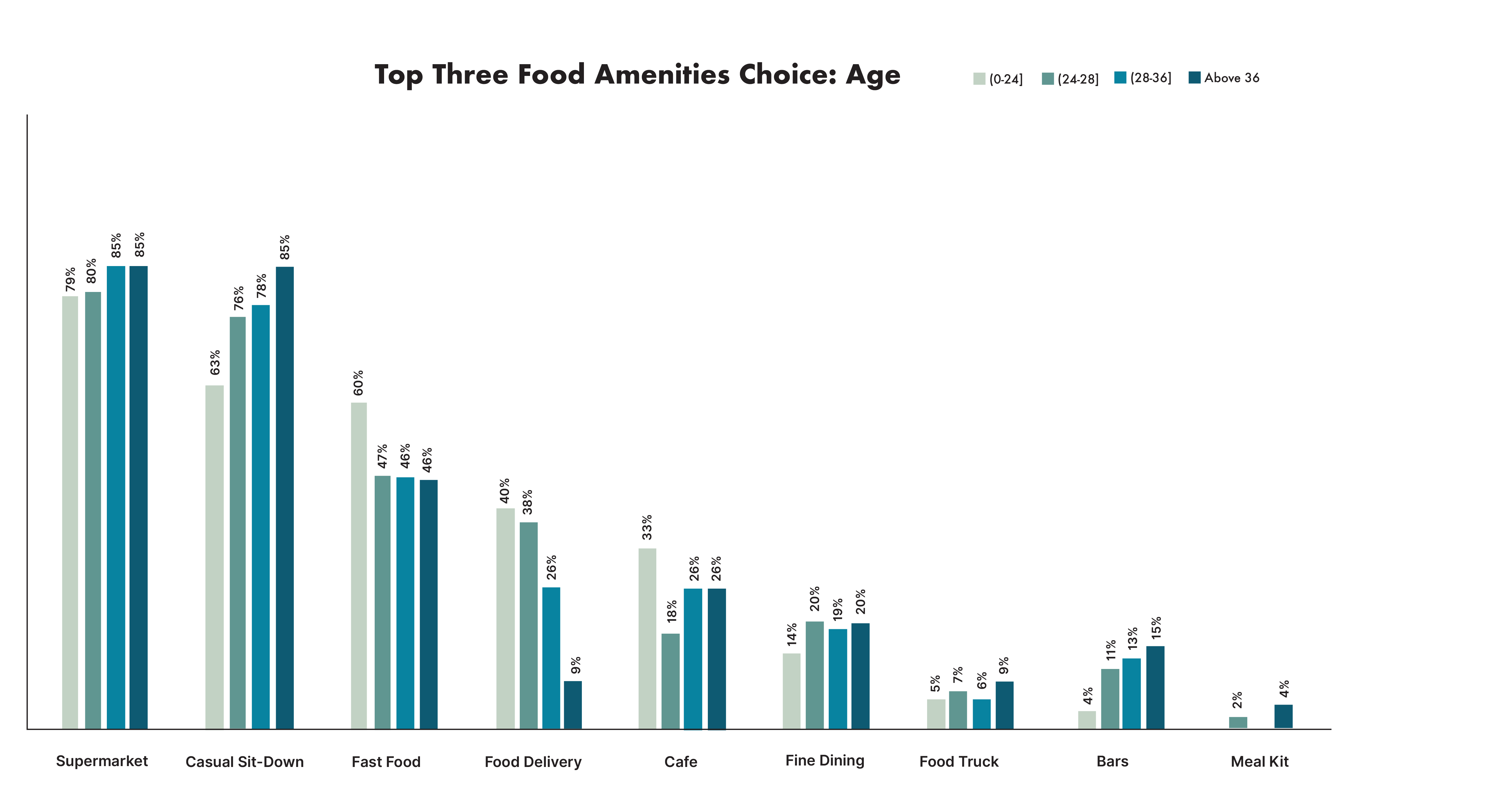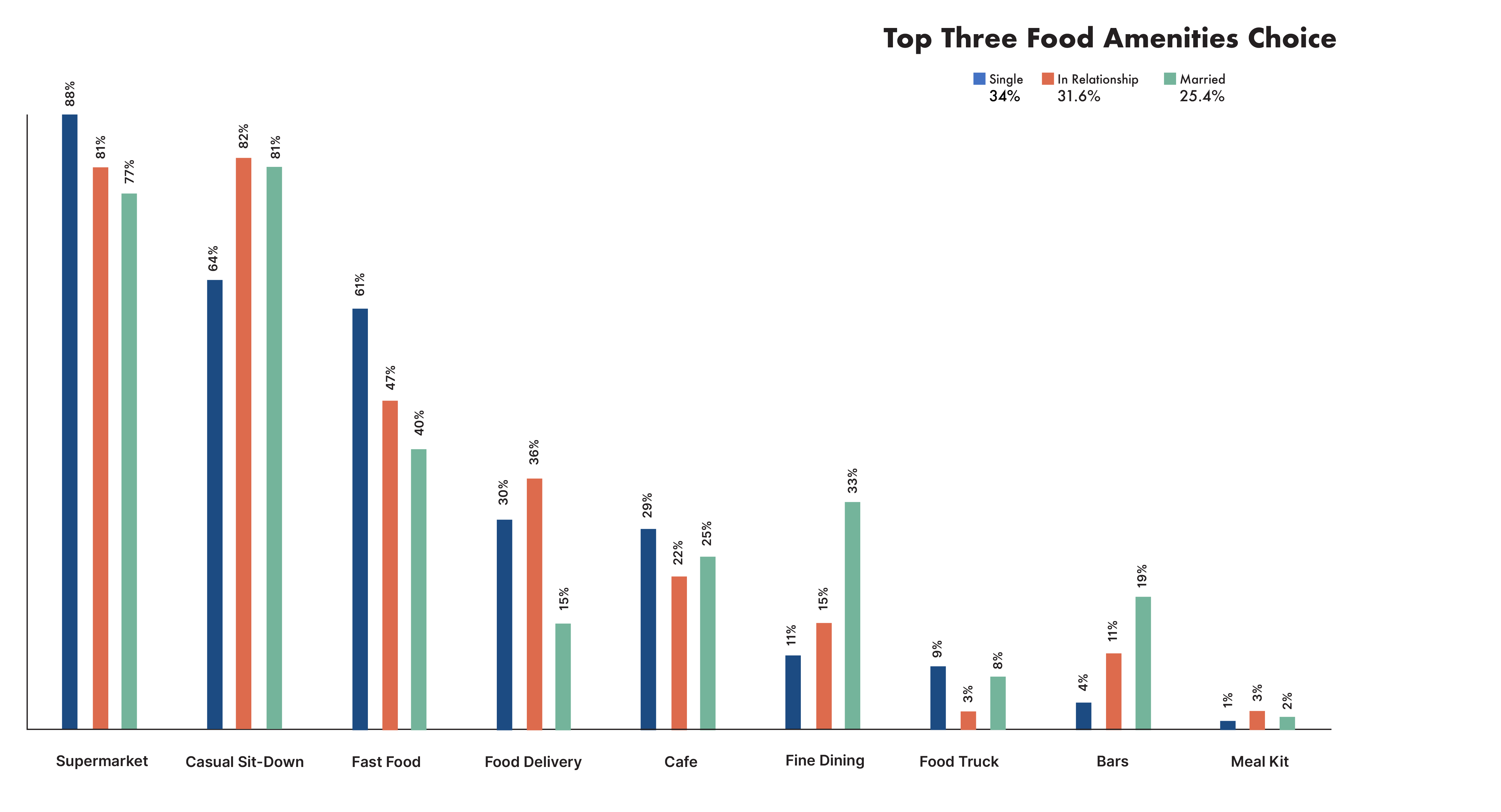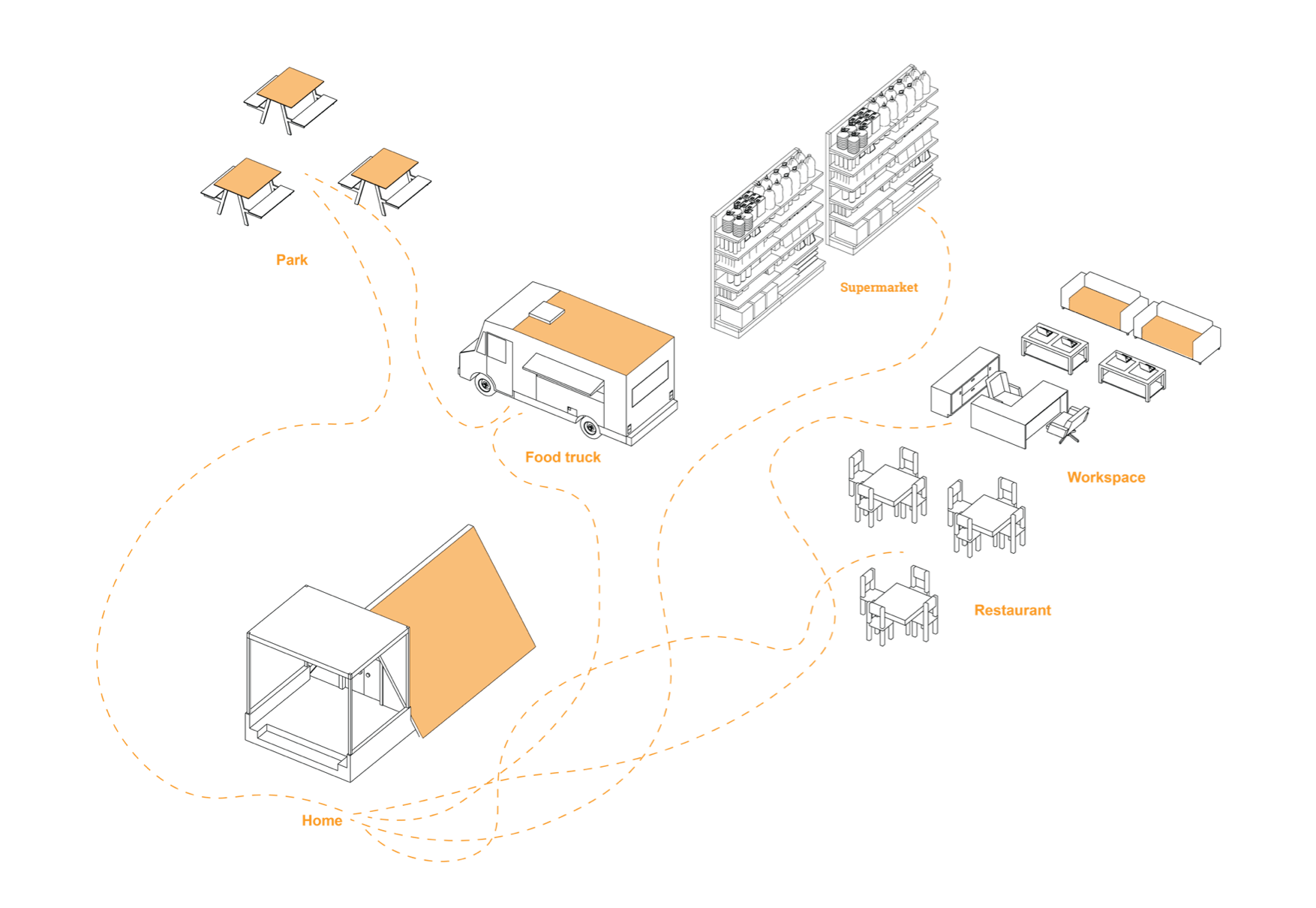
Challenges and Target User
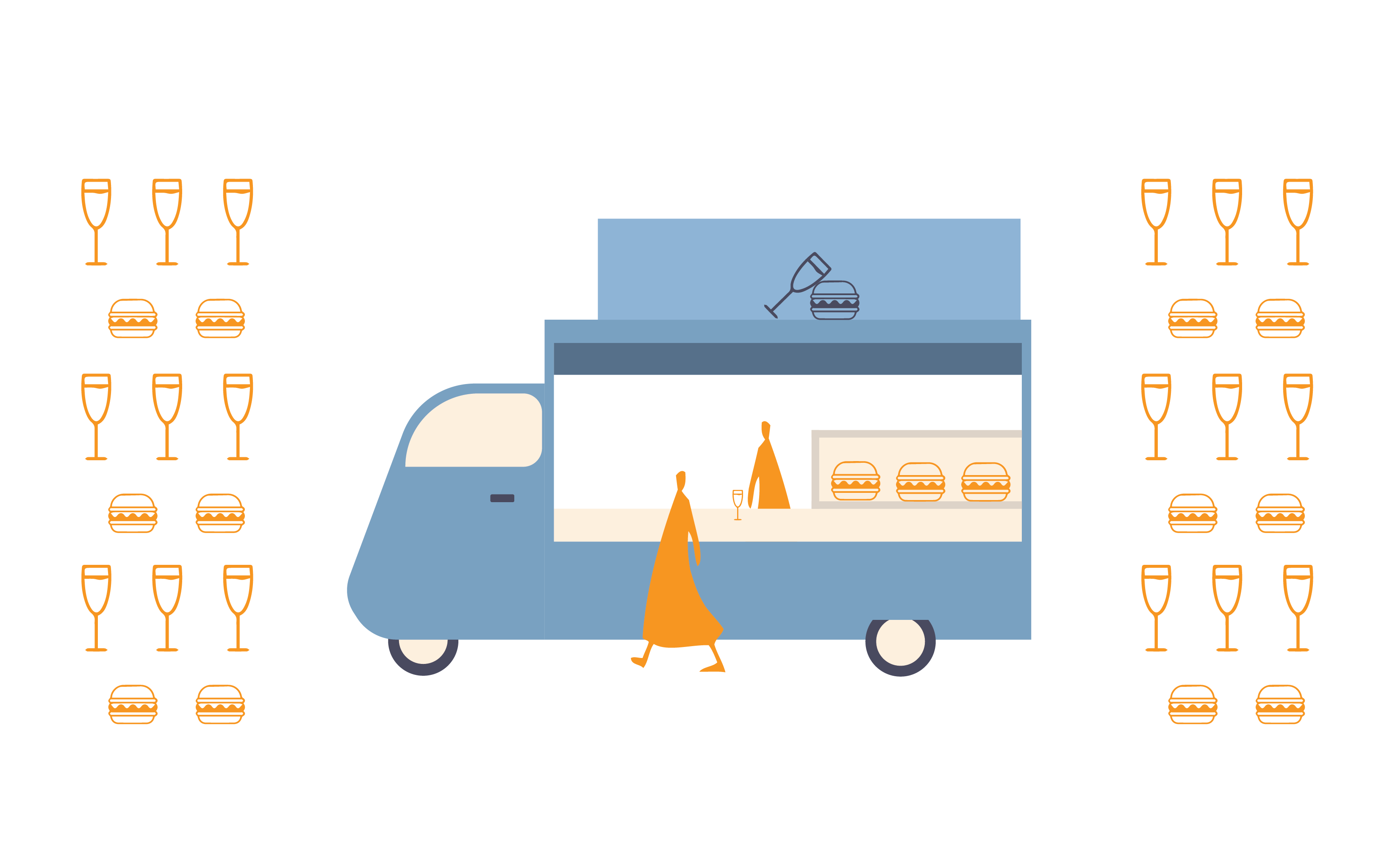
Why Food environment is a good lens to see Urban Lifestyle?
Maslow's basic human needs theory gave me a lot of inspiration. Food and the food-related environment covered all three major stages of his model,from basic needs, to psychological needs, to self-fulfillment needs.
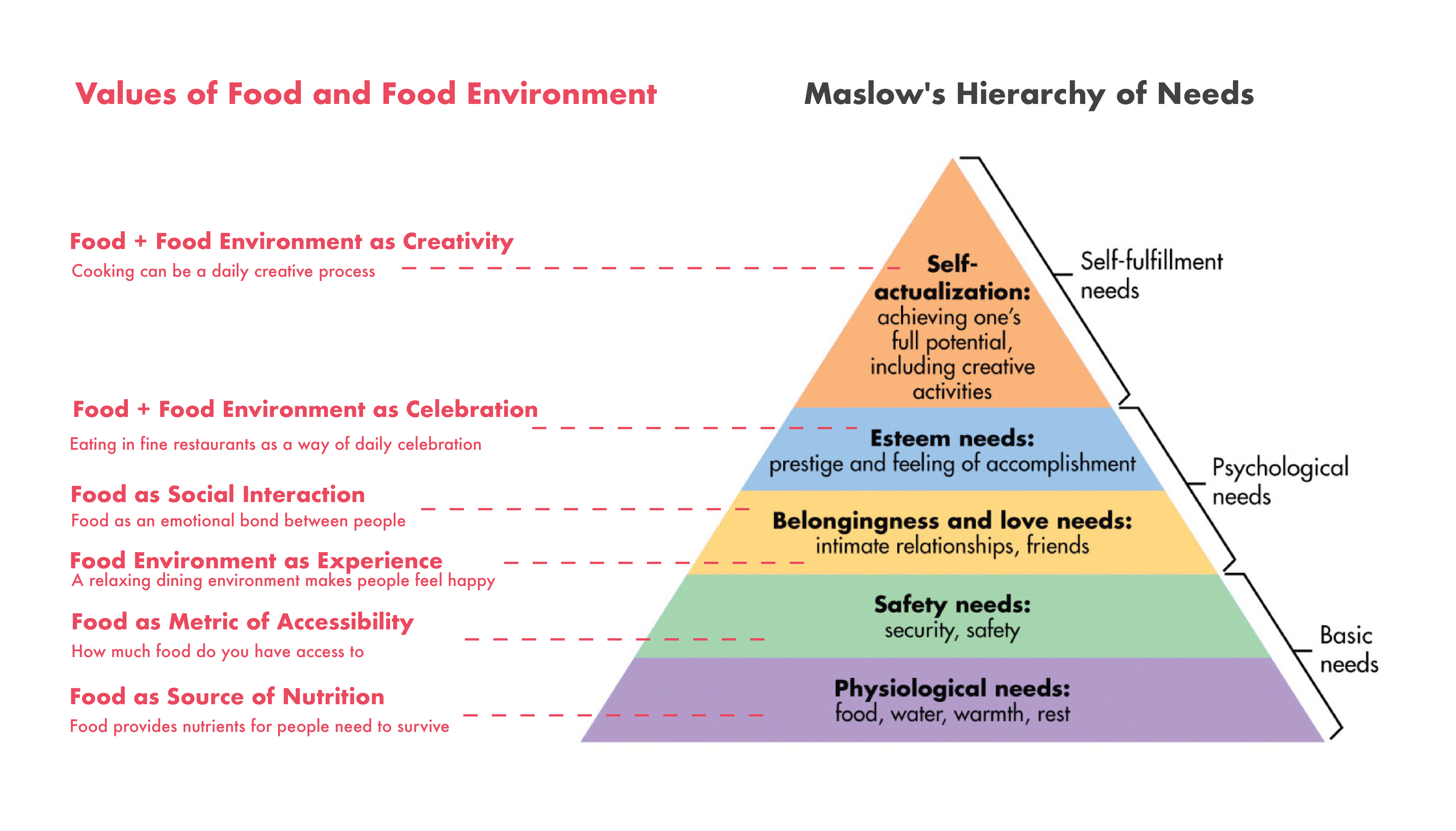
The food related environment can be classified by its different functions.
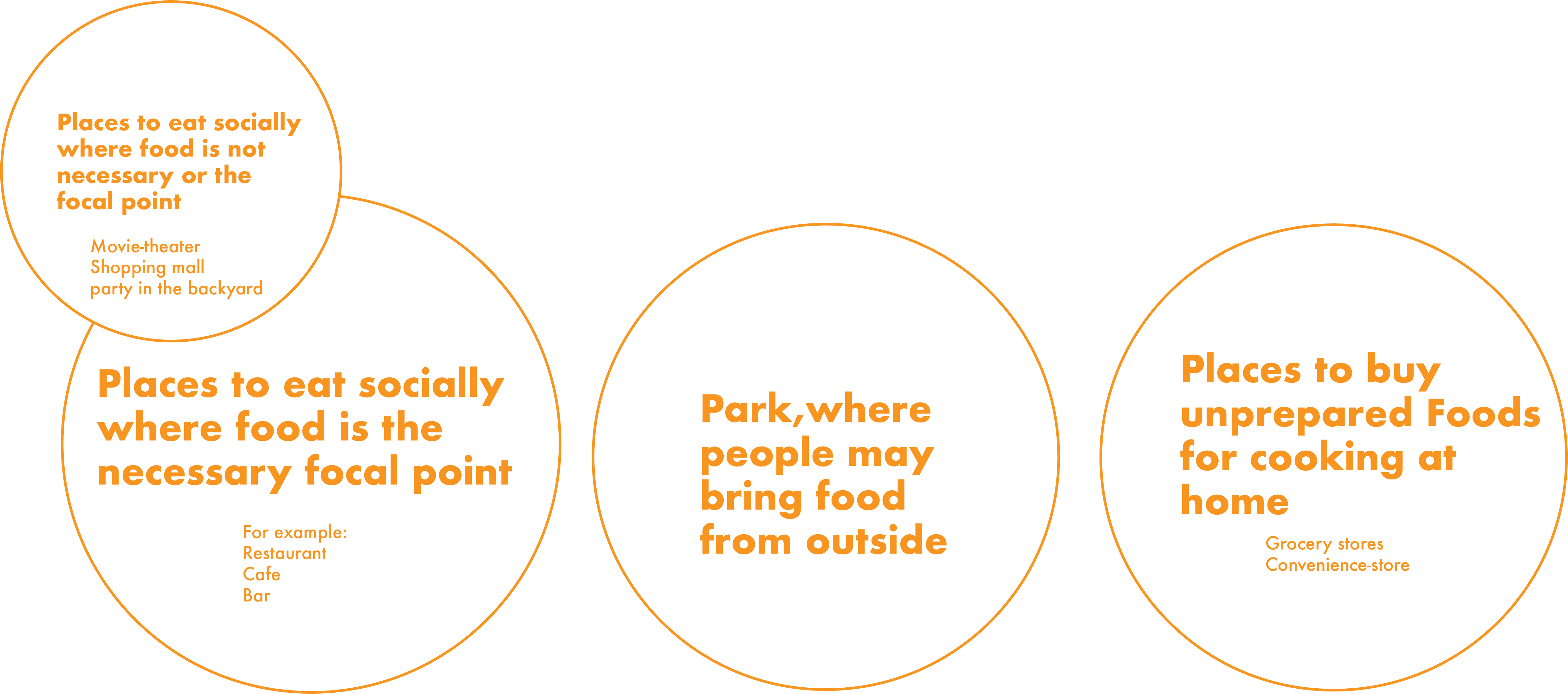
Zoom in: Back Bay as a Microscale Food Environment in Boston
Observation is how this project began. From typical weekdays to weekends, I document the scenes of people interacting with food-related environments, like restaurants, supermarkets and public dining spaces.
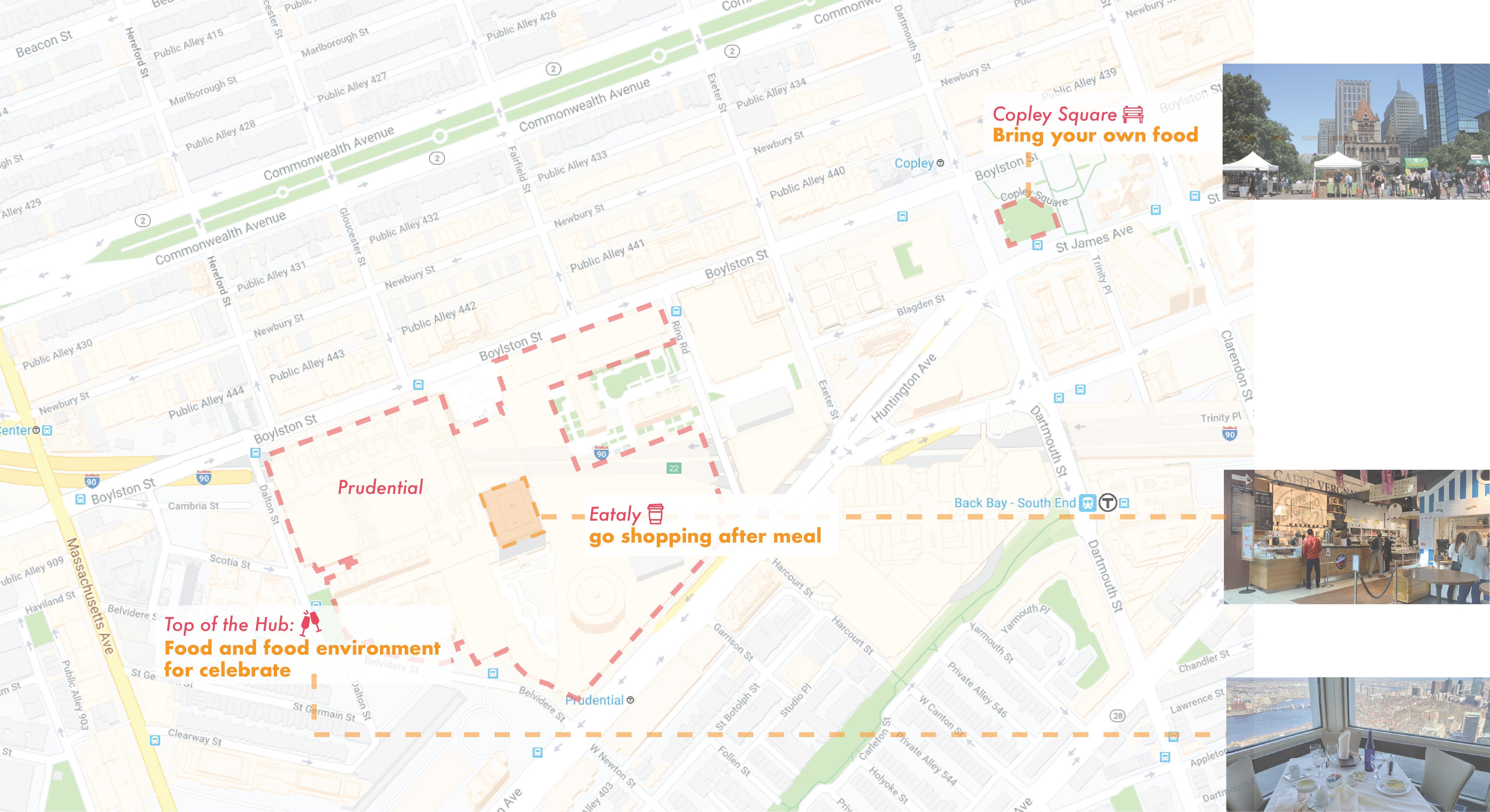
I started my observation from where I live, Back Bay. I find that the Prudential Center surroundings is a microscale public space that meets different people’s needs at different times of the day.
Zoom Out to Food Environments in Boston
After exploring near my home, I started to expand my observation to greater area in Boston.
I observe that food-related public space in different neighborhood have distinct difference to each other. I saw the white-collar going out of skyscrapers buying food from food truck as the lunch break; I knew many of my friends enjoy going to Allston, at 7 pm at weekends, to devour some cheap but authentic Korean and Japanese food; etc.
The dynamic of Boston lies in its colorful food environment, and this food environment shapes its residents' lifestyle.
Please click on location icons to explore more :)
Define Lifestyle Geography
In this thesis, I define the term of Lifestyle Geography, to see how one’s lifestyle influences one’s geographic location, and how geographies reflect lifestyles. Lifestyle Geography describes the relationship between behaviors and physical geography.
In this study, I will focus on four factors of lifestyle geography, including relationship status, where one lives, where one works, and one’s age. When the combination of these 4 factors change, lifestyle geography also changes.

Two Strategies to Understand Lifestyle Geography From Data Perspectives
I mainly use two strategies in this research and analysis investigating process: quantitative research, including an Online Questionnaire and Geospatial Data, and qualitative research including Observational Research.
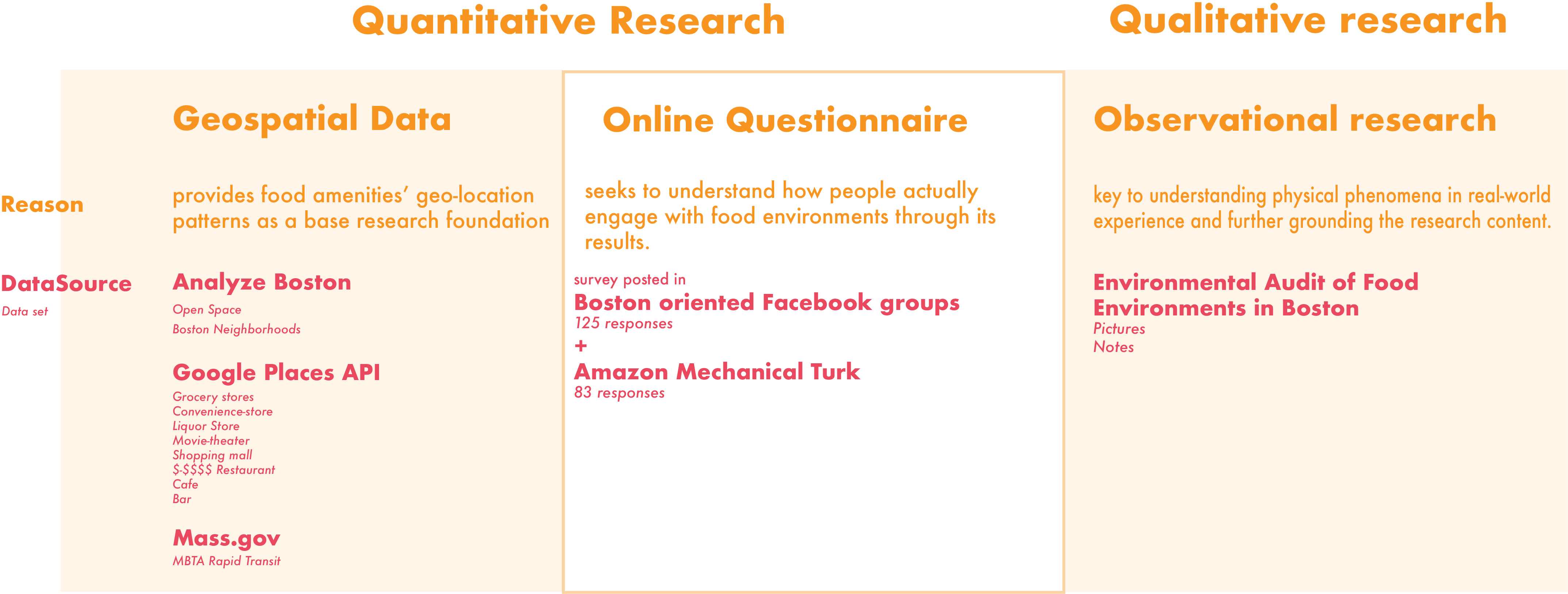
Geospatial Data
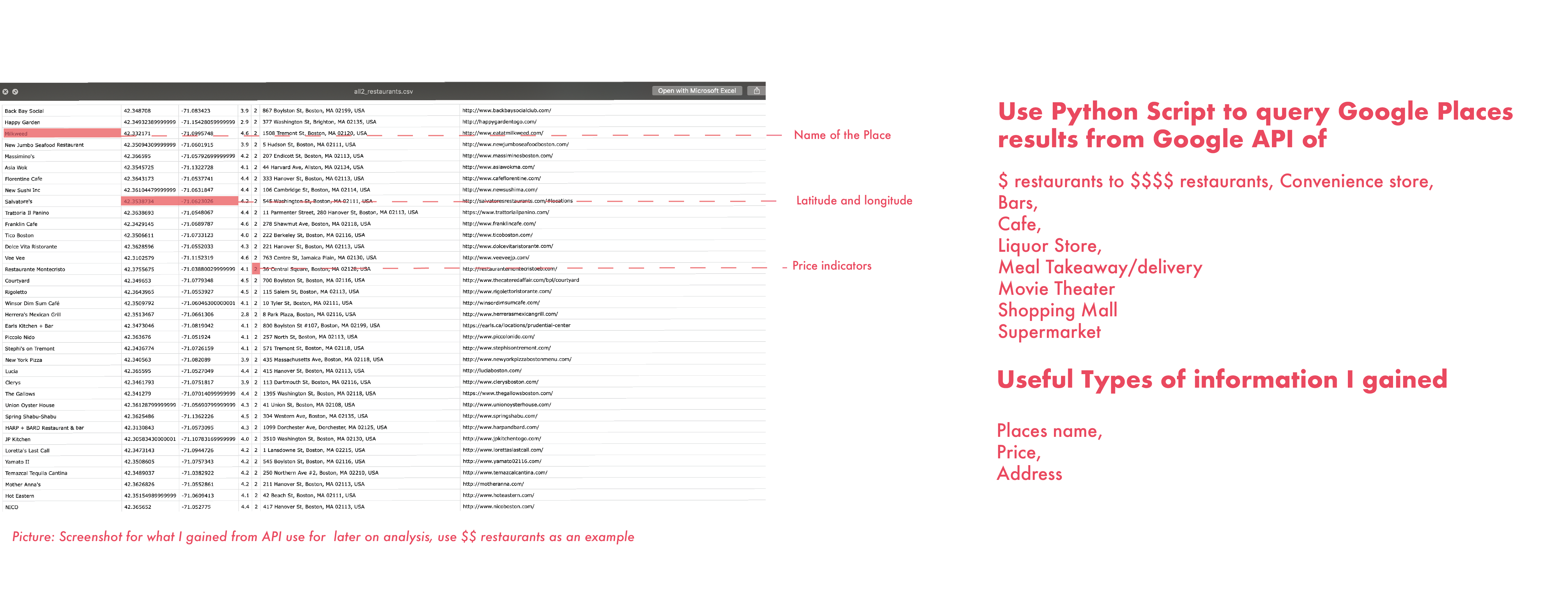
Online Questionnaire
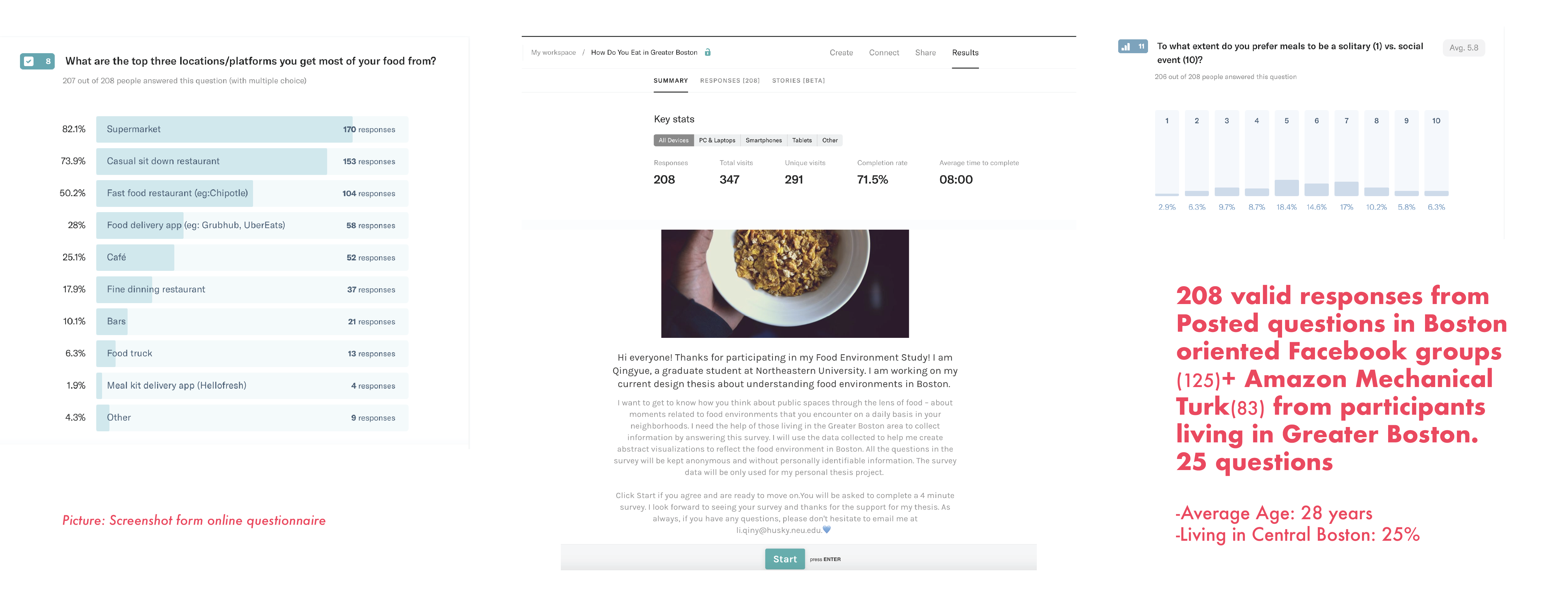
Three Discussions to Synthesizing and Visualizing Insights from
online questionnaire and geospatial data
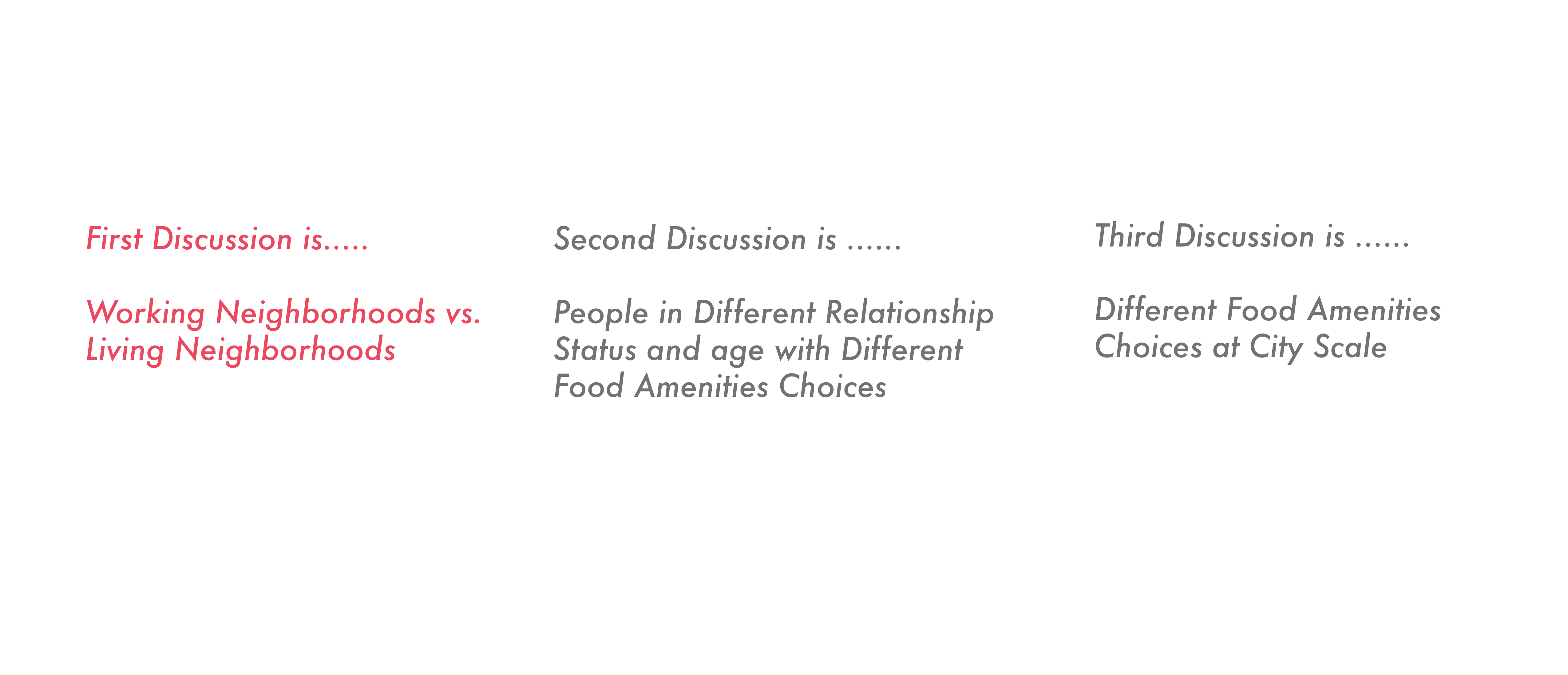
Working Neighborhoods vs. Living Neighborhoods: Food Amenities Distribution
From the survey, the Top 3 living neighborhoods are Back Bay, Mission Hill, and Brighton.
Top 3 working neighborhoods are Back Bay, Downtown and Fenway-Kenmore.
Based on food amenities geolocation data I gained from Google API, I categorize the data into the three types of food amenities, and then map it to the top neighborhoods in each category.

This cluster chart compares the number of different kind of food amenities in all these five neighborhoods. For each kind of food amenity, from left to right shows corresponding numbers. Separated by the middle red bar, Back Bay, the left side of each cluster shows numbers in living neighborhoods. Working neighborhoods are on the right.
The working neighborhoods generally have more cafes, convenient stores, shopping mall, and all kinds of restaurants (from cheap to-go restaurants to highend fancy restaurants). This difference in number helps working neighborhoods embrace a faster pace of lifestyle. This quantitative anlaysis is aligned with my previous observations.
In the meantime, living neighborhoods have the edge on some livable aspects, such as liquor stores and supermarkets. These advantages would appear more clearly when we analyze the tolerable travel time to grocery in my later discussion.
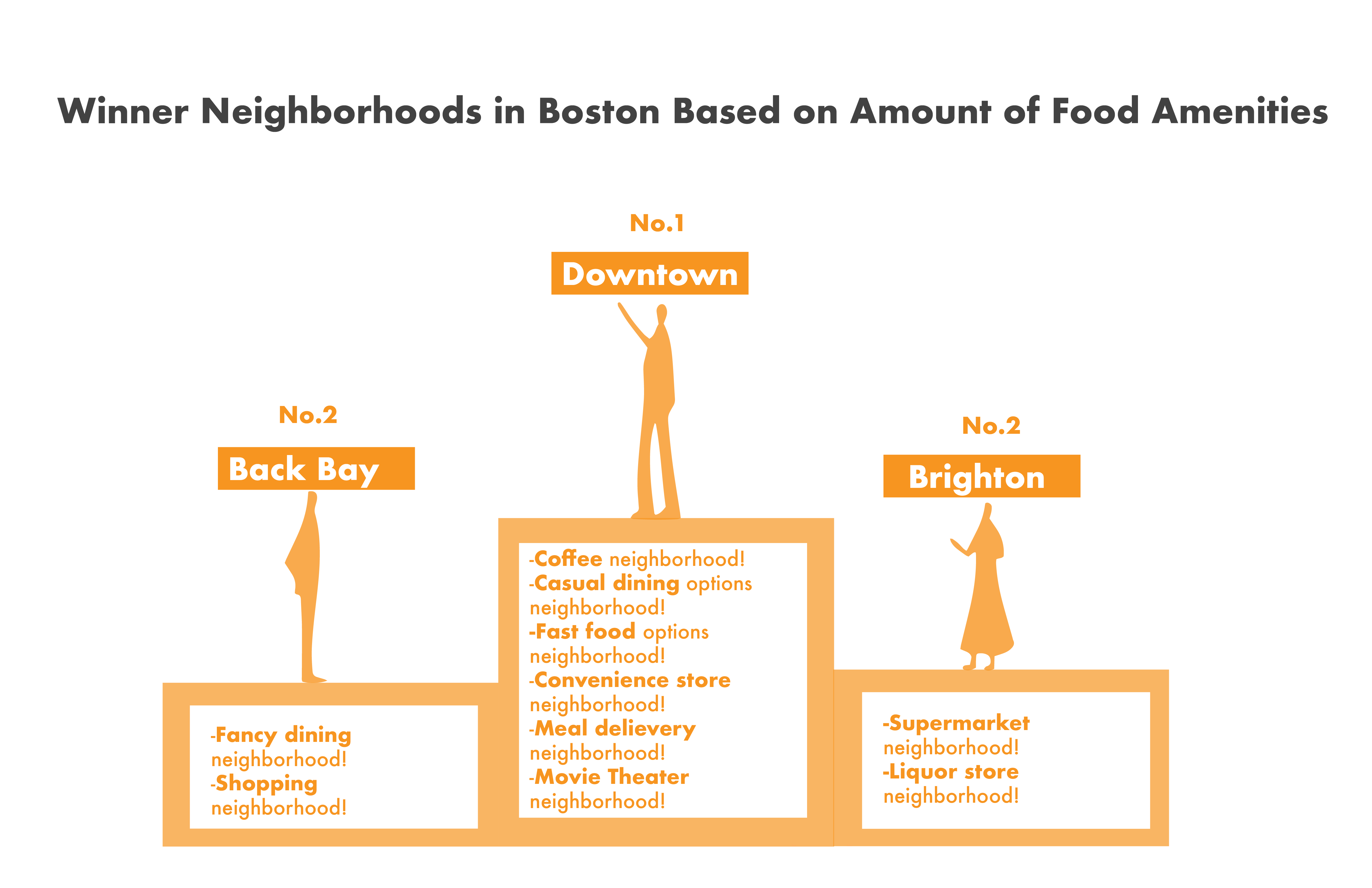
Now it's time for the Second Story
